Ethiopia
Ethiopia will begin running Africa’s first waste-to-energy plant in early 2018 according to the United Nations environment programme website. The facility in question, the Reppie project, is built on the Koshe landfill site located on the outskirts of the capital Addis Ababa.
The dump site which had served Addis Ababa for about 50 years made news headlines in March this year after a landslide at the premises killed about 114 people – residents and scavengers – according to government records.
In the wake of the incident, the government planned relocation for persons who lived on the large area said to be the size of 36 football pitches. They moved to establish the plant with the broader objective of transforming the site and Addis Ababa’s approach to dealing with waste.
The plant is expected to deal with 1,400 tons of waste daily, which figure comes up to about 80% of refuse generated by Addis Ababa. It will go on to supply the capital with 30% household electricity needs whiles conforming to global standards on air emissions.
Addis Ababa’s garbage headache – Addis Standard
Addis Ababa like any booming African city has its fair share of garbage headache. The Addis Standard in holistic analysis of the city highlighted that plight in an article titled: ‘Addis Abeba: a city struggling under the weight of its failures triggers fresh minefield.’
A portion on challenges relative to garbage read: “Turn to another topic. A city with one of the highest population densities in Africa (an estimated 5,165 persons per square kilometer), is imploding from the pressure of urban migration, which is manifested in housing crisis that was characterized as “70% informal” by the UN-HABITAT. Unemployment rate stands at 21.2%.
‘The breakneck speed by which the construction of high rising buildings for the rich lack viable designs to withstand the test of a rainy season.
“Addis Abeba continues to be a city that does not have a modest way to dispose its garbage, a draining cost to the basic dignity of the city’s rich, poor and vulnerable alike.”
As a city badly in need of land, the capital in June this year outdoored Africa’s first smart parking facility. The Smart Megenagna Parking is said to hold 90 cars in a space that ordinarily will hold nine cars.
The $2.2m steel facility is primarily meant to ease vehicular parking and to keep with global trends in the area of vehicle safety. It is Africa’s first such facility and is in one of the continent’s fastest growing cities. Ethiopia is an east Africa economic giant.
About the Reppie project – U.N. Environment
The project is the result of a partnership between the Government of Ethiopia and a consortium of international companies: Cambridge Industries Limited (Singapore), China National Electric Engineering and Ramboll, a Danish engineering firm.
The consortium was established to design, construct and in some cases own waste-to-energy facilities customized for Sub-Saharan Africa. Reppie is the first of what the consortium hopes will be a series of such facilities in major cities across the region.
“The Reppie project is just one component of Ethiopia’s broader strategy to address pollution and embrace renewable energy across all sectors of the economy,” said Zerubabel Getachew, Ethiopia’s deputy permanent representative to the U.N. in Nairobi.
“We hope that Reppie will serve as a model for other countries in the region, and around the world,” he stressed.
“In waste-to-energy incineration plants, rubbish is burned in a combustion chamber. The resulting heat is used to boil water until it turns to steam, which drives a turbine generator that produces electricity,” the U.N. website explains.
The energy generation system is more popular in Europe and in cities with limited land. France leads in the area with 126 waste-to-energy plants whiles Germany and Italy follow with 99 and 40 respectively.
Here, “waste-to-energy” incineration is a quadruple win: saving land space, generating electricity, preventing the release of toxic chemicals into groundwater, and reducing the release of methane — a potent greenhouse gas generated in landfills — into the atmosphere.



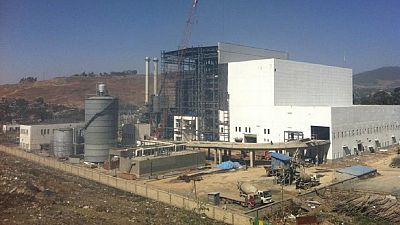

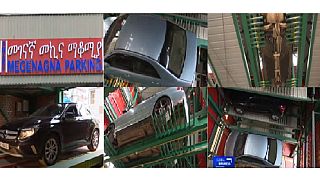
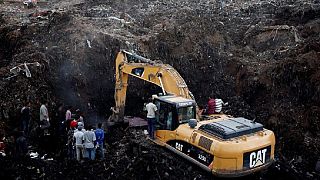

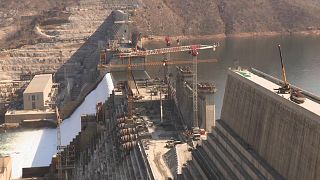
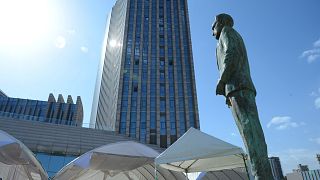




Go to video
Kenya set to surpass Ethiopia as East Africa’s largest economy in 2025 – IMF
Go to video
World Food Programme to halt aid for 650,000 women and children in Ethiopia
Go to video
Ethiopians mark Easter with calls for peace and love amid ongoing conflict
02:19
Ethiopians in Washington D.C. keep ancient language and orthodox traditions alive
Go to video
Is Ethiopia at war again? A look at the rebellion in one of its most powerful regions
Go to video
Lt. Gen. Tadesse Werede named the new interim president of the Tigray region